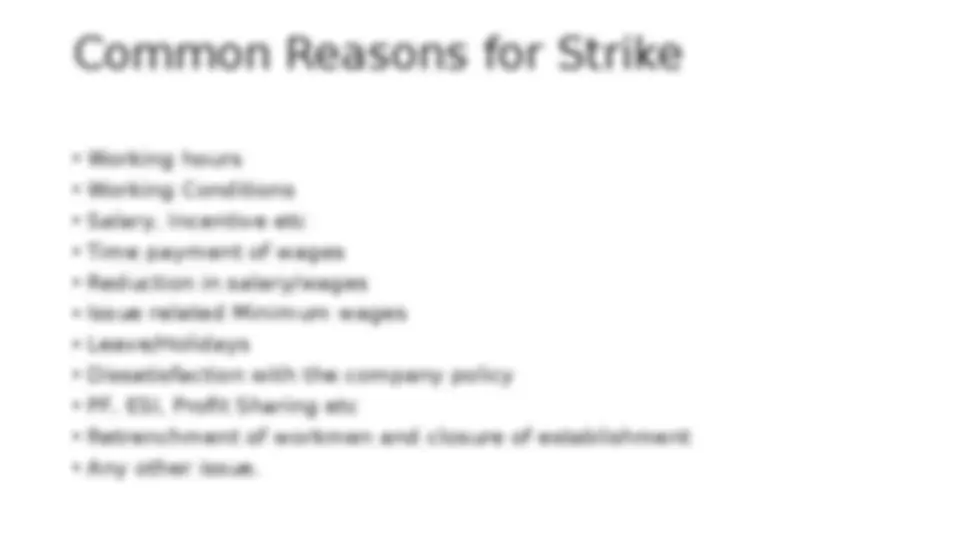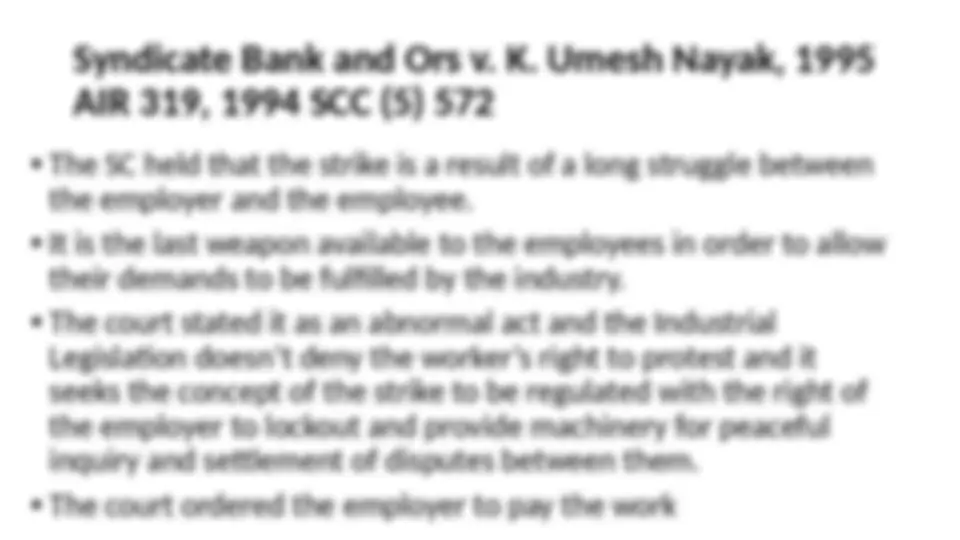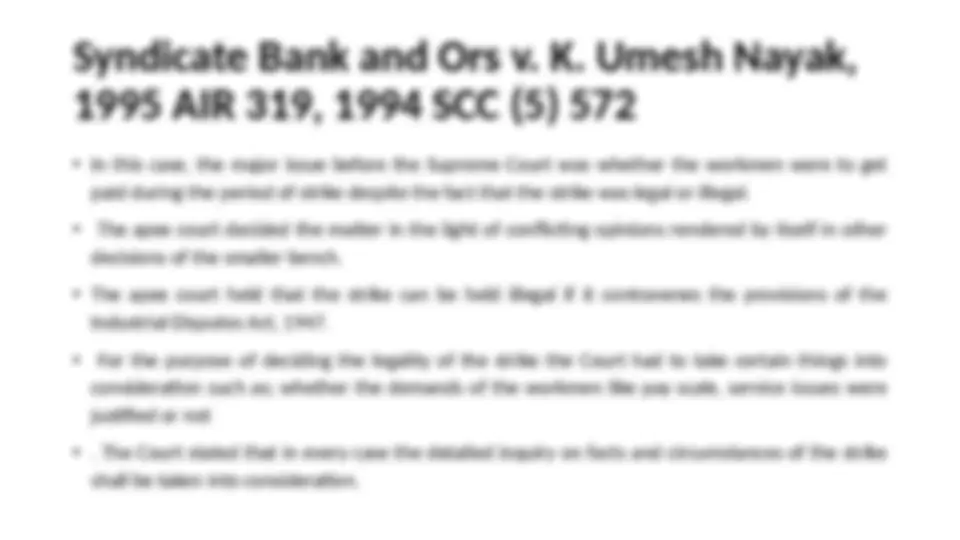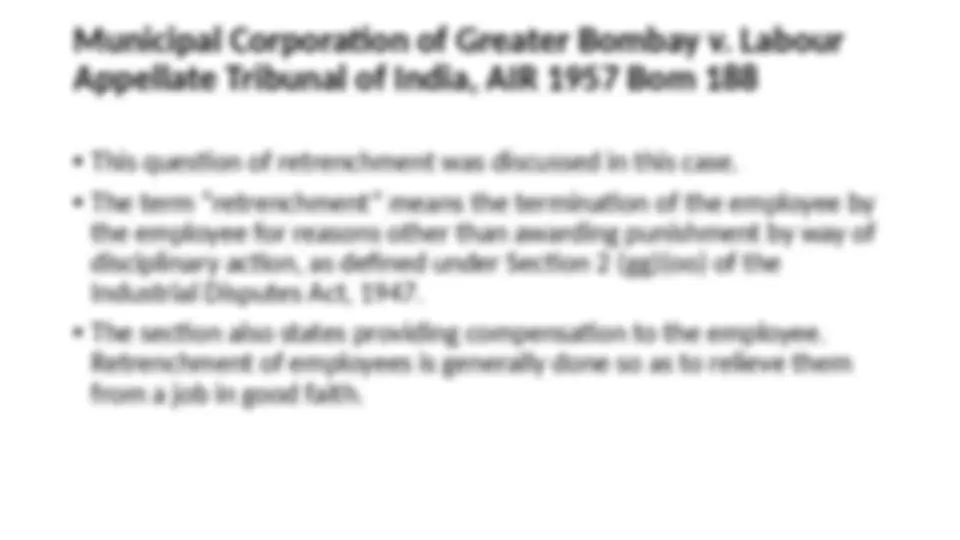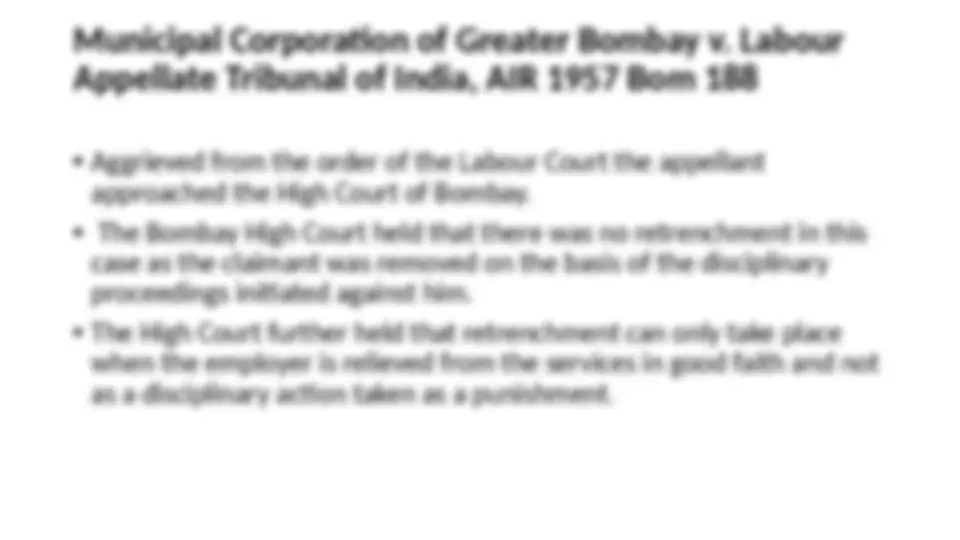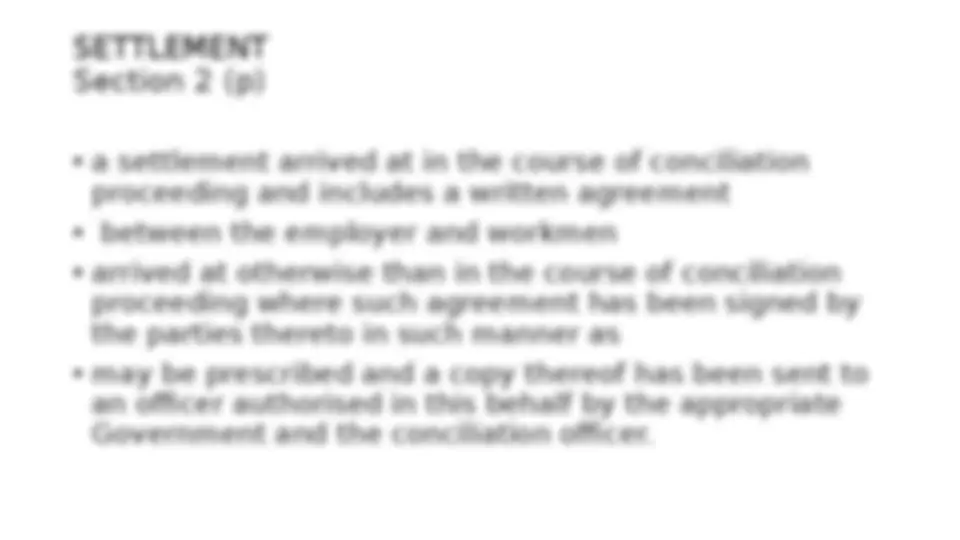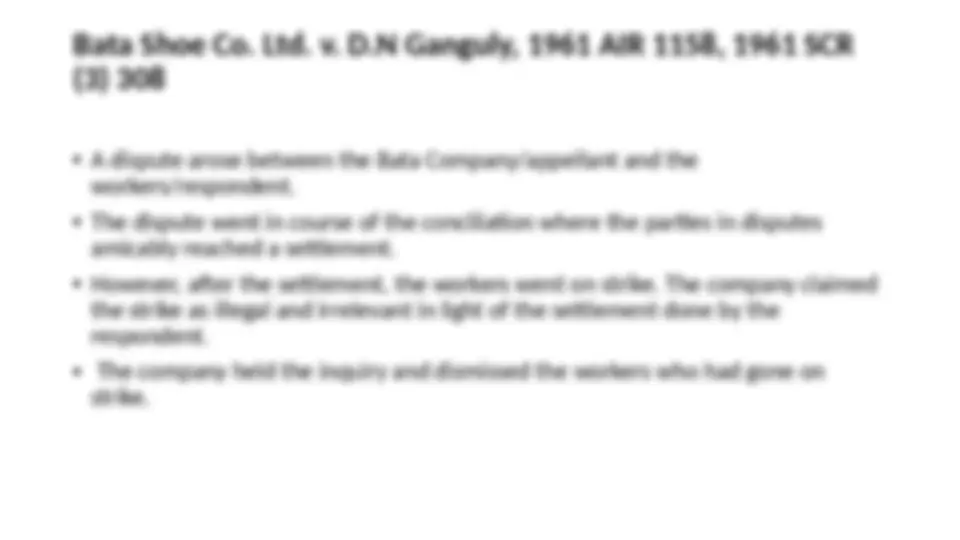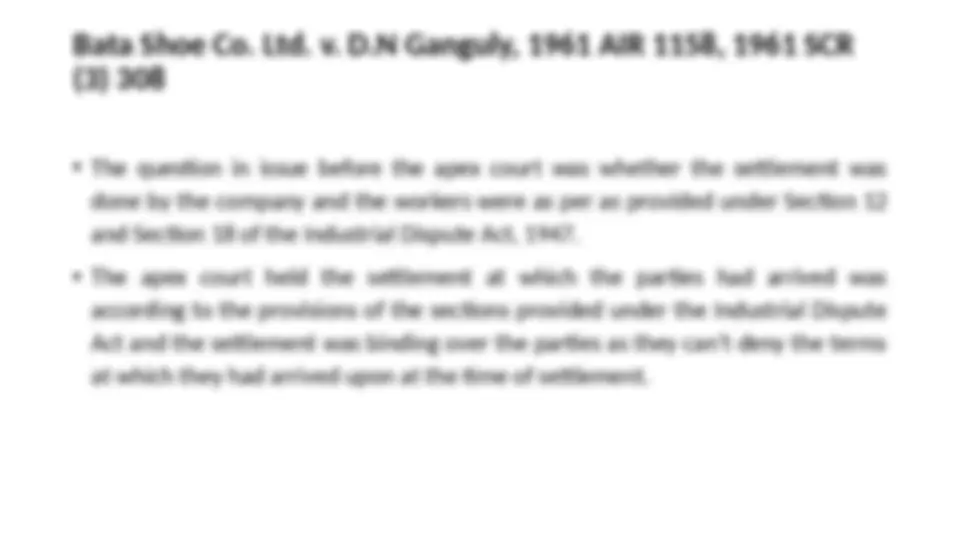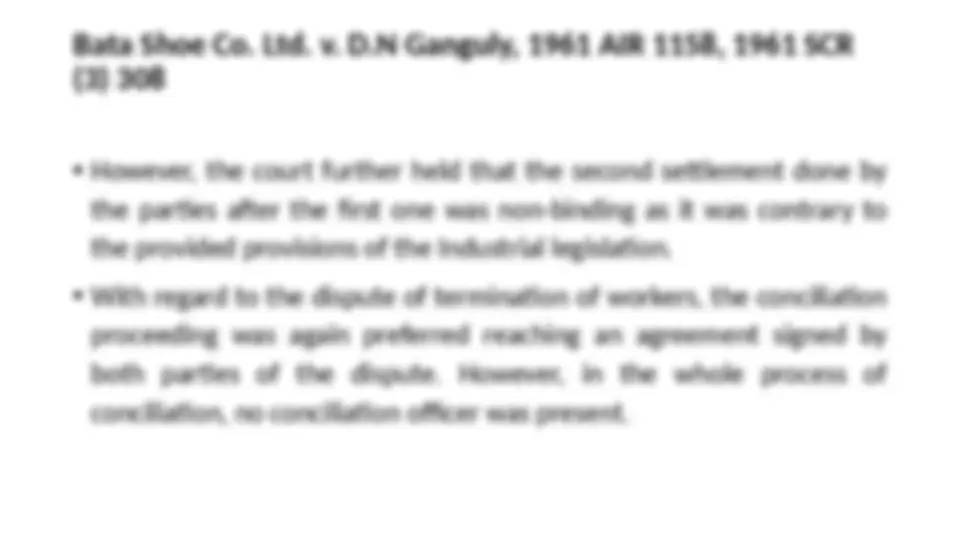Download Ppt on CASE LAWS of STRIKES, LOCKOUTS, RETRENCHMENT, AND SETTLEME and more Slides Labour Law in PDF only on Docsity!
CASE LAWS - STRIKES,
LOCKOUTS, RETRENCHMENT,
AND SETTLEMENT
STRIKE
SECTION 2(q)
- (^) Strike is to refuse to continue working because of an
argument with an employer about working conditions, pay
levels, or job losses
- (^) Right to strike is recognized globally. Article 19(1) the
Constitution of India 1949 guarantees the protection of
certain freedoms as fundamental rights.
- (^) A strike is a powerful weapon used by trade unions or other
associations or workers to put across their demands or
grievances by employers or management of industries.
Syndicate Bank and Ors v. K. Umesh Nayak, 1995 AIR 319, 1994 SCC (5) 572
- (^) The SC held that the strike is a result of a long struggle between
the employer and the employee.
- (^) It is the last weapon available to the employees in order to allow
their demands to be fulfilled by the industry.
- (^) The court stated it as an abnormal act and the Industrial
Legislation doesn’t deny the worker’s right to protest and it
seeks the concept of the strike to be regulated with the right of
the employer to lockout and provide machinery for peaceful
inquiry and settlement of disputes between them.
- (^) The court ordered the employer to pay the work
Syndicate Bank and Ors v. K. Umesh Nayak,
1995 AIR 319, 1994 SCC (5) 572
- (^) In this case, the major issue before the Supreme Court was whether the workmen were to get paid during the period of strike despite the fact that the strike was legal or illegal.
- (^) The apex court decided the matter in the light of conflicting opinions rendered by itself in other decisions of the smaller bench.
- (^) The apex court held that the strike can be held illegal if it contravenes the provisions of the Industrial Disputes Act, 1947.
- (^) For the purpose of deciding the legality of the strike the Court had to take certain things into consideration such as; whether the demands of the workmen like pay scale, service issues were justified or not
- (^). The Court stated that in every case the detailed inquiry on facts and circumstances of the strike shall be taken into consideration.
DEFINITION OF RETRENCHMENT
- SECTION 2 (Oo)
- (^) retrenchment means the termination by the employer of the service of a workman for any reason whatsoever, otherwise than as a punishment inflicted by way of disciplinary action, but does not include--
- (^) (a) voluntary retirement of the workman; or
- (^) (b) retirement of the workman on reaching the age of superannuation if the contract of employment between the employer and the workman concerned contains a stipulation in that behalf; or
- (^) (bb) termination of the service of the workman as a result of the non- renewal of the contract of employment between the employer and the workman concerned on its expiry or of such contract
Municipal Corporation of Greater Bombay v. Labour Appellate Tribunal of India, AIR 1957 Bom 188
- (^) This question of retrenchment was discussed in this case.
- (^) The term “retrenchment” means the termination of the employee by the employee for reasons other than awarding punishment by way of disciplinary action, as defined under Section 2 (gg)(oo) of the Industrial Disputes Act, 1947.
- (^) The section also states providing compensation to the employee. Retrenchment of employees is generally done so as to relieve them from a job in good faith.
SETTLEMENT
Section 2 (p)
- (^) a settlement arrived at in the course of conciliation proceeding and includes a written agreement
- (^) between the employer and workmen
- (^) arrived at otherwise than in the course of conciliation proceeding where such agreement has been signed by the parties thereto in such manner as
- (^) may be prescribed and a copy thereof has been sent to an officer authorised in this behalf by the appropriate Government and the conciliation officer.
METHODS
- (^) Collective bargaining
- (^) Negotiating
- (^) Conciliation
- (^) Voluntarily Arbitration
- (^) Adjudication
Bata Shoe Co. Ltd. v. D.N Ganguly, 1961 AIR 1158, 1961 SCR
- (^) A dispute arose between the Bata Company/appellant and the workers/respondent.
- (^) The dispute went in course of the conciliation where the parties in disputes amicably reached a settlement.
- (^) However, after the settlement, the workers went on strike. The company claimed the strike as illegal and irrelevant in light of the settlement done by the respondent.
- The company held the inquiry and dismissed the workers who had gone on strike.
Bata Shoe Co. Ltd. v. D.N Ganguly, 1961 AIR 1158, 1961 SCR
- (^) The question in issue before the apex court was whether the settlement was done by the company and the workers were as per as provided under Section 12 and Section 18 of the Industrial Dispute Act, 1947.
- (^) The apex court held the settlement at which the parties had arrived was according to the provisions of the sections provided under the Industrial Dispute Act and the settlement was binding over the parties as they can’t deny the terms at which they had arrived upon at the time of settlement.

